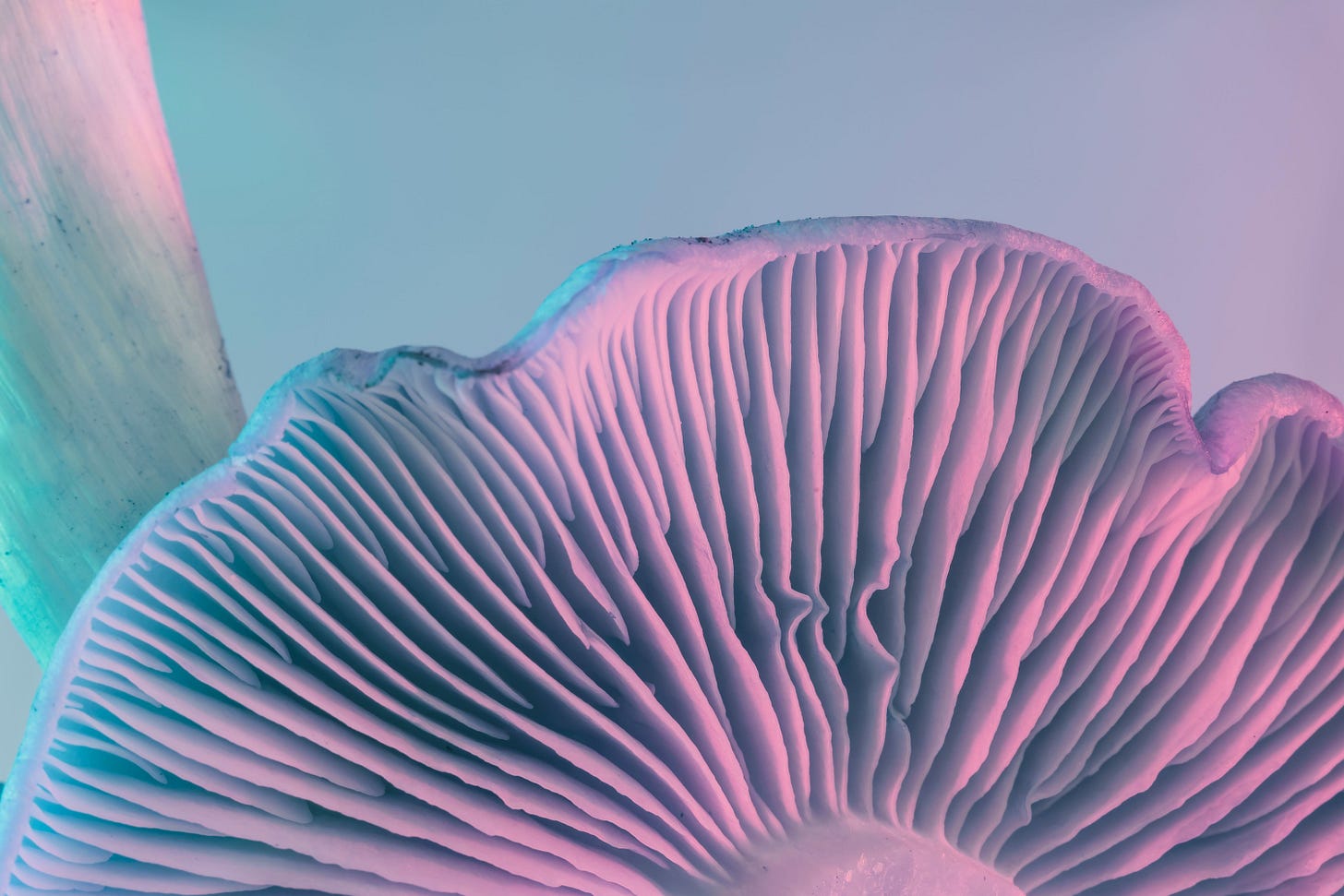Happy Friday, Fungi Friday fam!
Made a quick day trip down to the farm last weekend and finally believe we may have figured out the power issues… who would have known that angling solar panels towards the South can provide 40% more efficiency? So that’s the project for today… who know’s, as you’re reading this, I may be on top of the trailer propping our six panels up! Hoping that tiny tweak finally gets us over that hump so we can finally get these mushrooms sprouting!
Unfortunately that means we are still in the waiting game… will be moving eight more fully incubated bags of spawn into the fruiting chamber, and with the excess power (fingers crossed), our humidity levels and lighting should finally be right. And so the experiment goes on… but for now, let’s get to the stories.
What is microdosing?
Article number one this week is a comprehensive overview on the practice of micro-dosing. For those unaccustomed with that term, micro-dosing is the practice of ingestion of tiny amounts of psychedelics (around one-20th to one-10th of a recreational dose) on a regular basis. Such a small amount is known to provide benefits such as increasing mood and creativity, without inducing the “hallucinogenic” experience associated with these substances. While preliminary trials are promising, it is still well known that much more research is needed. Nonetheless, as that research takes place, we here at Fungi Friday’s will be sure to bring you the findings, as this budding industry is only just in its infancy!
The Path to Legalized, Accessible Psilocybin Therapy
Speaking of psychedelics, feature number two today sticks with that theme and covers an expert palliative care physician from Seattle, Washington on his thoughts on the road to legalizing these substances for use in medicinal settings. As we’ve covered plenty of times on this small corner of the interwebs, more and more studies are beginning to pop up that are claiming to show dramatic results for psilocybin as a treatment for the depression and demoralization experienced by people confronting a terminal or life-threatening illness, among other mental health applications.
The main problem, however is still access, as these substances are still illegal. In the past, where they were shunned by the medical community, at least recently more and more people are catching on to their potential uses. In fact, Psilocybin is now listed as an investigational drug. It has even completed Phase I trials testing its safety and remains under investigation. For some like Dr. Aggrawal however, this is not enough. When requesting to use this substance for two terminally ill patients under the “right to try” laws, he was shut down by the D.E.A, which made him take action and bring a suit against them. And while at the end of January 2022, the court turned down the suit on the grounds that the DEA’s ruling did not constitute a final judgment, the team brought the case back to the DEA for final determination regarding right-to-try access and filed a petition to reclassify psilocybin from Schedule I to Schedule II.
While there is still a long ways to go, this is yet another tiny crack in the dam, which will hopefully one day open the flood gates in allowing good scientists and care physicians the ability to continue their practice and studies on these highly useful substances.
Turkey tail mushroom benefits
And for the final feature of this week, let’s dive deep into one of the most studied medicinal mushrooms in the world, the turkey tail mushroom! Known well in both traditional Eastern medicine as well as recent scientific studies, the turkey tail possesses a whole host of health benefits and some particularly powerful effects on the immune system. It’s high levels of nutrients, including antioxidants and immune boosting compounds, leading from benefits ranging from improving gut health and cardiovascular health, to potentially even fighting cancer.
The turkey tail mushroom is a type of medicinal mushroom harvested around the world. It grows on the dead bark of hardwood trees and resembles a turkey tail — hence its name: a flat, fluted fungus with distinctive stripes in hues of brown, grey, tan and white. The turkey tail mushroom has a thick, leathery texture that makes it unpleasant to eat in its whole form. Instead, it’s typically consumed in the form of powder or tea. For a further break down of all of the great benefits that accompany this novel mushroom, check out the article!
Want even more? Here are some other interesting, mushroom focused reads of the week:
Psychedelics might be the next big thing in mental health care, experts say
Truffle Lovers Will Fall Hard for Giada De Laurentiis’ Mushroom Pasta Recipe
As always, thank you for reading this weeks edition of Fungi Friday’s! If you enjoyed what you found, please feel free to forward to friends also interested in the Fungi Community!
And if you were forwarded this post and enjoyed what you found, please subscribe below:



